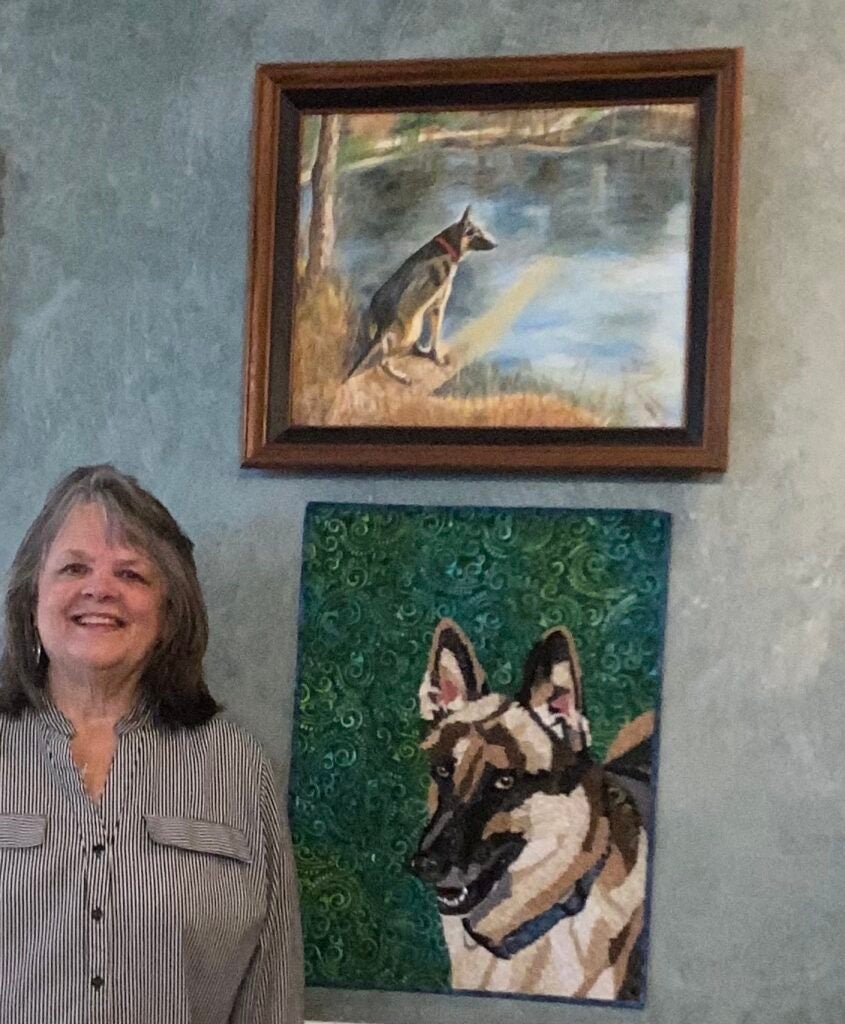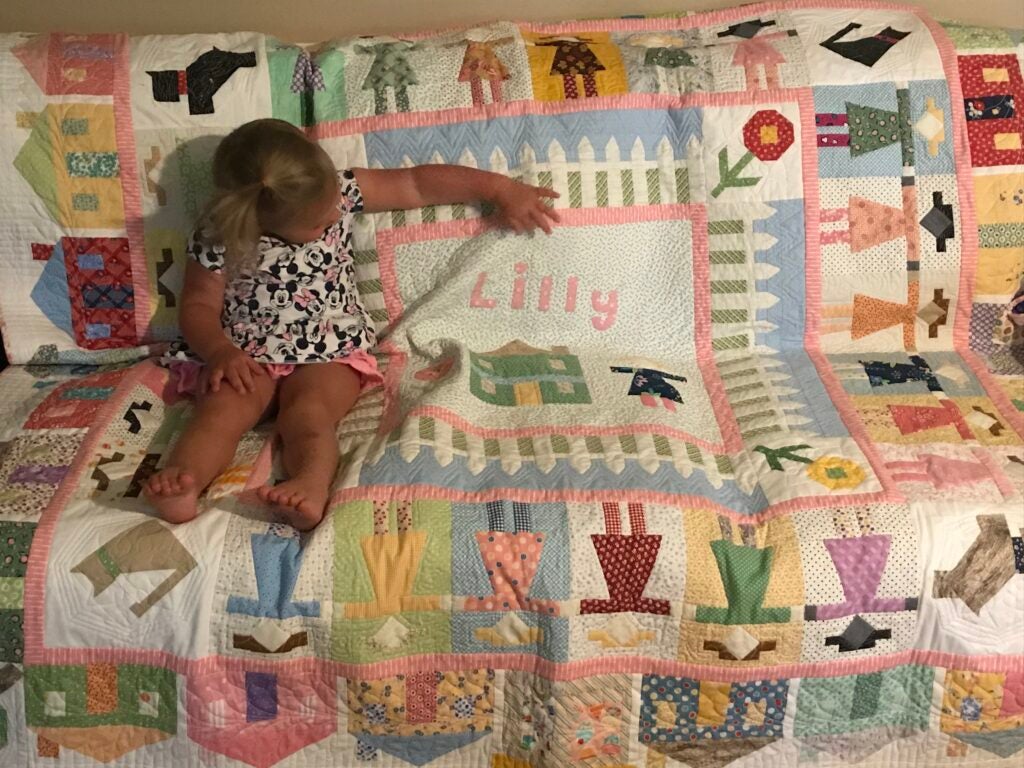
STORY BY ELISABETH ALTAMIRANO-SMITH
PHOTOS CONTRIBUTED
Quilting is a favorite cultural pastime in the South. Although quilting dates back to ancient Egyptian times, American quilts have made their own self-important rite of passage into history. During Colonial times, whole cloth pieces were sewn together front and back. In the 1770s, patchwork quilts became common, followed by the use of paper patterns to construct designs onto the quilt during the 1800s. Local resident Melinda Maddox is an artistic quilter and adds a unique aesthetic of originality and artistry to her quilt patterns — many times using a photo as a reference to quilt onto the front of a quilt.
“I always have enjoyed painting, but when COVID came it stopped me from going to Senior Connection to paint, so I decided that I would work on my quilting instead,” said Maddox.
Maddox began sewing in junior high school. In high school, she made herself and fellow cheerleaders new CCHS cheerleading uniforms.
“My mother and grandmother both could sew,” said Maddox. “Mother could sew a doll dress without a pattern when I was a little girl, and my grandmother quilted. Her quilts were hand-sewn, and I still have them.”
“I did other things like smock girl’s dresses and make my sons’ pants, but I didn’t start quilting until about four and half years ago,” she said. “I had just retired, and some friends at First Baptist Church encouraged me to come to the quilting group and that’s when quilting started for me.”
In 2020, she entered an African sunset-themed quilt into the Birmingham Quilt Show, and received third place among state competitors. This year, she quilted her German Shepherd, Jake, onto a quilt for the Roy Wood Art Show in Clanton.
“Artistic quilts take more time and are more difficult to make so you really need to be passionate about what design you are going to put on it,” said Maddox. “I chose the African sunset from a picture I took during a mission trip while on a boat and the other from a photo of our family dog.”
Maddox begins each project by creating a piece of paper the exact size that she wants the quilt to be. Once the large piece of paper is taped together, Maddox uses her drawing skills to hand draw the image onto the paper. She does not draw every detail of the picture, but only the main subject and contrasting colors.
“After that is the fun part,” she said. “I pick out the material that I am going to be using. I take the picture with me and hold up different fabrics to try to get the colors just right. When I made my German Shepherd quilt, I held the fabric up to him and would ask, ‘Jake, is this your color?”
Maddox uses many painting skills while working on her quilts including shading techniques and attention to character details.
“When painting a landscape, the trees and grass may all be green, but they are different shades of green,” she said. “Finding the perfect fabric for a landscape quilt is the same principle. You need different shades of the same color to show dimension. Also, when adding details to a dog or person, there needs to be more defining traits, like the shape of the eyes or their expression, so it doesn’t look like any German Shepherd, it looks like Jake, specifically.”

After Maddox has selected the perfect fabrics, she color codes them similarly to a paint-by-number project. She then glues the pieces in order of dimension and sews them in place.
Maddox uses “free-motion sewing” to complete her project, in which she uses her hand to guide the machine being careful to match her stitch length.
“Once the project is complete, I use a little fabric paint to add detail — such as for eyes, teeth or nose,” she said.
Since Maddox’s retirement four and half years ago from Alabama’s Department of Education, she has used some of her career knowledge to help her while quilting.
“I worked with technology before at my job, and now, I am using it to make quilting patterns,” said Maddox.
The software design program, Electric Quilt 8, has a library of over 6,700 pre-drawn designs ready to use. Users may use these designs as they are or edit them.
“I am always working on two or three quilts,” she said. “They can take me anywhere from three months to a year to finish. One grandson wanted one with Hot Wheels and a granddaughter wanted hers with her name on it with doll dresses. I made her dresses from the same material to match. I like to sew in personal details that mean something and make them special.”
Melinda and her husband, Bill, live on the lake. She has two sons, Matt and Bryan, and five grandchildren.
